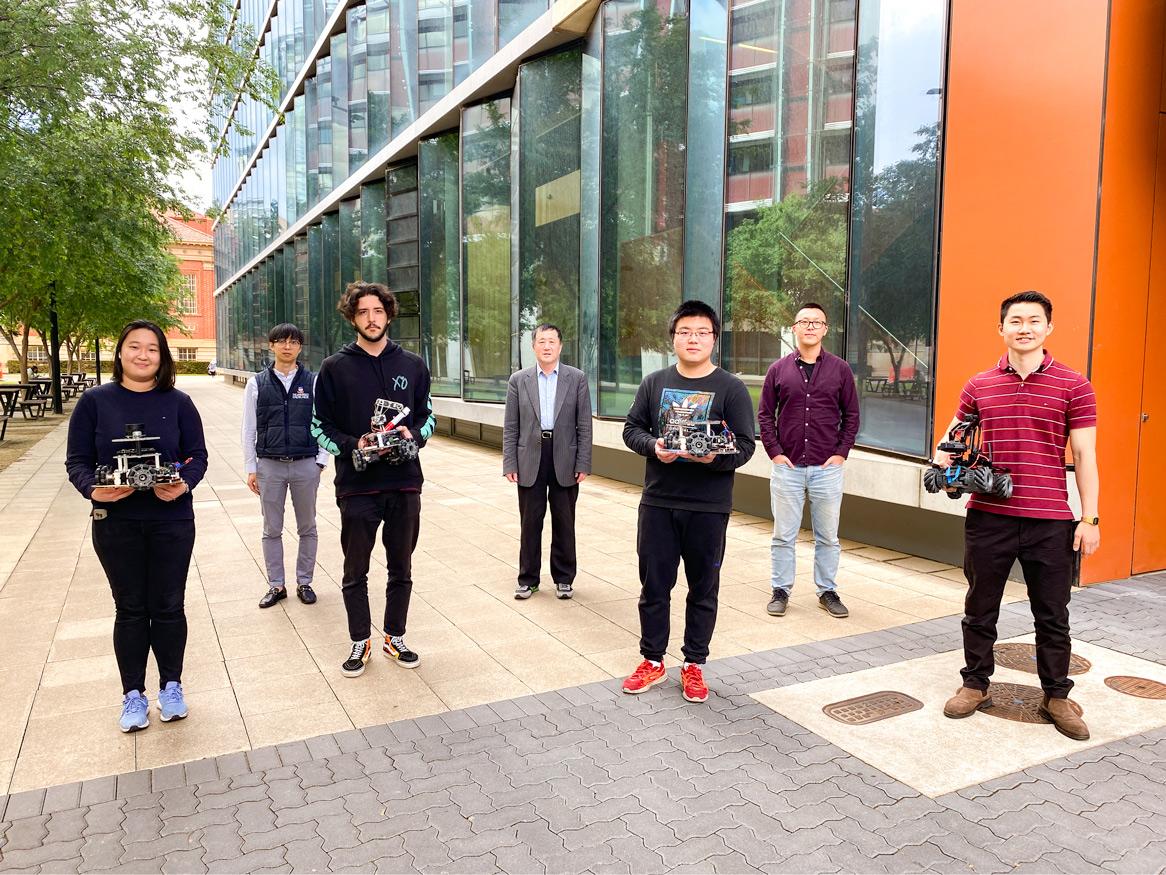Engineering students explore artificial general intelligence
Final year engineering students focused on traversing the divide between artificial narrow intelligence (ANI) and artificial general intelligence (AGI).

Bachelor of Engineering (Electrical and Electronic) students Jingke Li, Sze Yee Lim, Chaoyong Huang and Ruslan Mugalimov explained their focus on AGI explaining that where artificial narrow intelligence is designed to do one task, artificial general intelligence is the next step where AI can understand or learn any intellectual task that a human being can.
What is AGI?
“To help distinguish artificial narrow intelligence from artificial general intelligence we can take the hands of a human as an analogy,” the team said.
“Some tasks, like hammering in nails, are best performed with the appropriate tools - a hammer. And this is narrow intelligence. Our hands, on the other hand, are capable of doing many different complex tasks"
"You might not be able to hammer a nail in with your fist, but you can certainly achieve a variety of other complex tasks that a hammer simply couldn’t”.
As the first AGI project at the University of Adelaide, the team together with their supervisors Professor Peng Shi and Prof Cheng-Chew Lim and technical advisors Dr Xin Yuan and Yang Fei, are paving the way for future research in the area.
How does the project demonstrate AGI?
The team developed a rudimentary form of AGI by building a cooperative drone and autonomous rover system to solve a maze problem.
"The rover and drone work together. An autonomous rover might be able to follow instructions from the drone in solving the maze, by traversing the environment and finding the most direct exit, but it will never be able to handle a dynamic, ever-changing environment," the team said.
"But unlike in an autonomous system when the two work together, the drone can provide the rover with suggestions on which way to go. It's up to the rover to explore the environment, using information provided by the drone, as well as the information learned by the rover through exploration, to successfully traverse the maze."
“And this is demonstrating a rudimentary form of artificial general intelligence – because the system is able to solve the maze itself without being provided with a direct solution path. The rover also does this while avoiding any obstructions or collisions, along the way”.
What are some applications of your project?
“The application of artificial general intelligence is broad and can be applied in different kinds of areas. For example, it can be used for space exploration, and it can be used as a housekeeper robot,” the team said.
“It could also be used in search and rescue, to find the quickest route without needing human intervention”.
Want to see more?
The team will be showcasing their work at Ingenuity – an interactive showcase of university student projects exploring real-life applications of architecture, engineering, computer and mathematical sciences. Check them out at the Adelaide Convention Centre on 26 October under the Transforming Technologies theme. Registrations essential!
